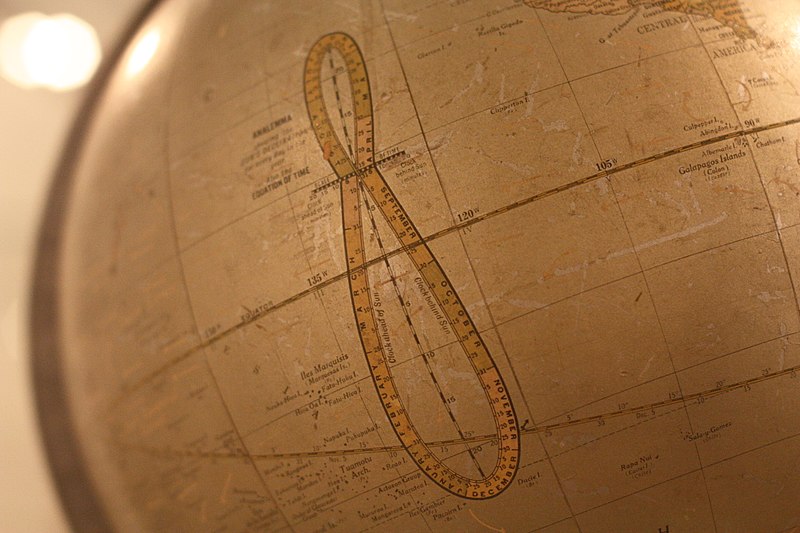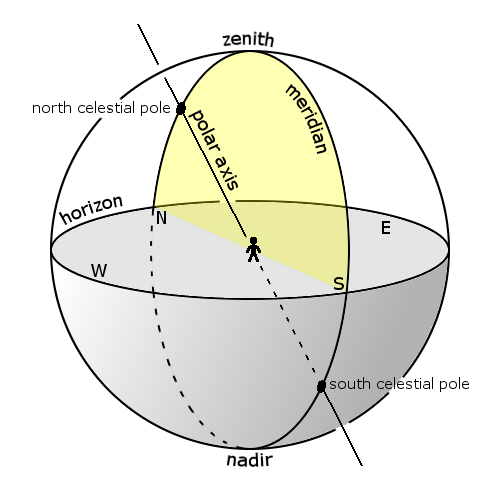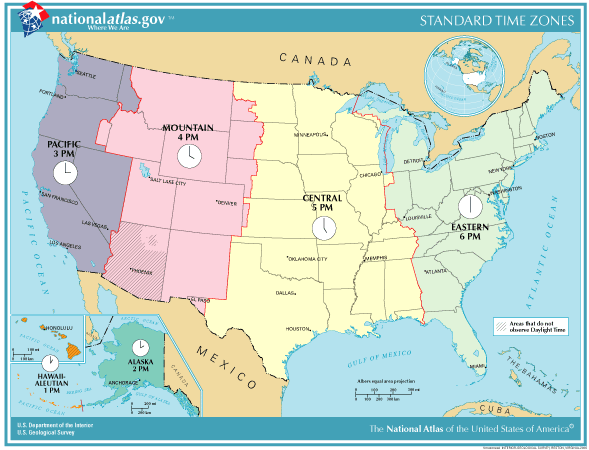
What is the meridian?
In the jargon of astronomers and celestial navigators, your local meridian is an imaginary semi-circle that crosses your sky’s dome from due north to due south. The point where the sun crosses that arc – when the sun is highest for that day – is variously called solar noon, or midday, or high noon, or local noon or just plain noon.
An astronomer might say that the sun is making an upper meridian transit at such a time.
When does it happen for you each day? It might or might not surprise you to learn it doesn’t usually happen at noon on your clock.

Solar noon
At solar noon, the sun can be at one of three places: at zenith (straight overhead), north of zenith or south of zenith. At temperate latitudes in the Northern Hemisphere, the noonday sun is never at zenith but is always found in the southern sky.
At temperate latitudes in the Southern Hemisphere, the noonday sun is never at zenith but is always found in the northern sky.
The noonday sun can only be at zenith in the tropics.

Solar noon shadows
The shortest shadow of the day comes at solar noon, or when the sun transits your local meridian. North of the Tropic of Cancer, the noonday shadow always points due north.
South of the tropic of Capricorn, the noonday shadow always points due south.
Clock noon versus solar noon
Generally speaking, noon by the sun and noon by the clock seldom agree. Noon by the sun is a natural phenomenon, based on the sun’s highest point for the day. Noon as defined by the sun long preceded the invention of clocks and the introduction of time zones. Needless to say, noon by the sun also preceded so-called daylight saving time or summer time, whereby we pretend that it’s one hour later than it is.
Consider that – within a single time zone – noon by the sun comes earlier by the clock at the eastern edge of the time zone, yet later by the clock at the western edge of the time zone. You might notice if you routinely travel east or west within your time zone.

You don’t need a clock to find out when the sun reaches its noontime position. At solar noon, the shortest shadow of the day points due north at northern temperate latitudes (or due south at southern temperate latitudes).
With the eye alone, it’s difficult to know exactly when the shadow shrinks to its shortest length. But, given a full day of sunshine, we can use the method of equal altitudes to find due north (or due south) and our local meridian.
Here’s how you do it.
Place a plumb or vertical stick into the ground. Note the length of any morning shadow. Then wait until the shadow reaches this same length in the afternoon. Bisect this angle to find due north (or due south). For a fuller explanation, click into MySundial online and scroll down to 4. The “Method of Equal Altitudes.”
Don’t want to try this at home?
Here’s an easy way to find your local noon. Visit Sunrise Sunset Calendars to find out the clock time for solar noon (sun on your meridian) in your sky, remembering to check the solar noon box.
Of course, the sun is not the only celestial object to climb highest up for the day when it crosses the meridian at upper transit. The same goes for the moon, planets and stars. But it’s easier to determine your meridian by using the sun.
Bottom line: In the jargon of astronomers, the sun is said to make an upper meridian transit when it reaches its highest point for the day at solar noon (midday).











